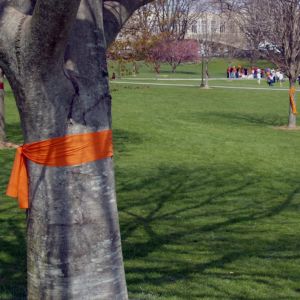I still remember the classroom: the tile floors; the high ceilings; the tall, gothic windows. It was 1997 and I was a student at Virginia Tech. Ten years later, a deranged student would chain lock the doors and methodically shoot innocent students and professors in one of the worst massacres in U.S. history.
But Virginia Tech was a gun-free zone.
No, it wasn’t. It was — and remains — a pretend gun-free zone.
A courtroom is a true gun-free zone. Every person who enters a courtroom must pass through a metal detector and have their belongings searched. Likewise, an airplane is a true gun free-zone. Each passenger must be examined by a body scanner and sometimes be physically frisked. Every bag is searched. That is what it takes to make a true gun-free area. A sign on a window or a policy in a handbook does not create a gun-free zone, but it does create a helpless victim zone since rule-following people are apt to obey while law-breaking criminals are not. Logic alone is enough to reveal this, but sadly we have more than logic. We have data.
Nearly every mass shooting has occurred in pretend gun-free zones. Whether it’s a school, which is pretend gun-free by law, or a movie theater, which is pretend gun-free by a proprietor, the results are the same: good people become defenseless victims to law breakers, including terrorists and the mentally ill.
Some have argued that arming more citizens would not stop potential attacks, but this is not supported by the evidence. When President Obama directed the Centers for Disease Control and Prevention to re-examine gun violence in America, the CDC reported back that guns are an effective crime deterrent and that defensive gun use by victims may outnumber offensive gun use by criminals. Just recently, a woman in Texas with a gun successfully defended herself from a man intent on robbing her at a gas station.
Some people feel safer with tough gun laws, but feeling safe and being safe are two different things. The correlation between restrictive gun laws and murder rates is clear: the more of the one, the higher the other. The District of Columbia’s murder rate skyrocketed after its 1976 handgun ban and fell to historic lows after the ban was struck down in 2008 by the Supreme Court. Good people with guns don’t create crime, they stop it.
And no one is more law-abiding than the average concealed-carry person. A 2010 study published in the Police Quarterly found that gun owners with concealed carry permits are even more law abiding than police officers. According to another study, those with concealed carry licenses are four times less likely to commit murder than the general population.
In light of these facts, more schools have opened their doors to guns. Still, only nine states have laws protecting gun rights on college campuses and most states prohibit guns on campus. In February, a new law passed in Texas that will allow concealed carry of firearms into public university classrooms. One University of Texas dean, Fritz Steiner, feels so unsafe by the new law that he moved to University of Pennsylvania, but according to concealedcampus.org, more than 150 U.S. college campuses have allowed concealed carry for more than 1,500 combined semesters without a single resulting act of violence. Again, good people with guns do not commit crimes, they deter them.
How can we prevent another tragedy like the one at Virginia Tech? Is banning guns from college campuses an answer? Logistically, we cannot ban guns from campuses without bogging down movement by guarding every possible entrance with TSA-style searches. There are 100 million guns in America and gun ownership is enshrined in our Bill of Rights (for good reasons).
Given this reality, our only effective recourse to prevent or minimize future mass shootings is to arm as many good people as possible. Many reasonable people have decided that Wayne LaPierre of the National Rifle Association was right: the only thing that stops a bad guy with a gun is a good guy with a gun. And while Steiner may feel safer at his new post in Pennsylvania, the stats show he is not.
Unfortunately, most college campuses are still pretend gun-free zones and so our nation’s students and faculty remain at greater risk.
Postscript: While this piece was being prepared, the largest U.S. shooting massacre to date occurred in Orlando in a “gun-free” nightclub. The perpetrator, an Islamic extremist, was eventually killed by a police officer — a good guy with a gun.

